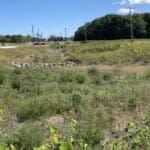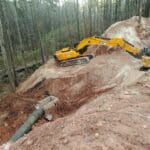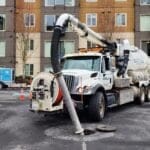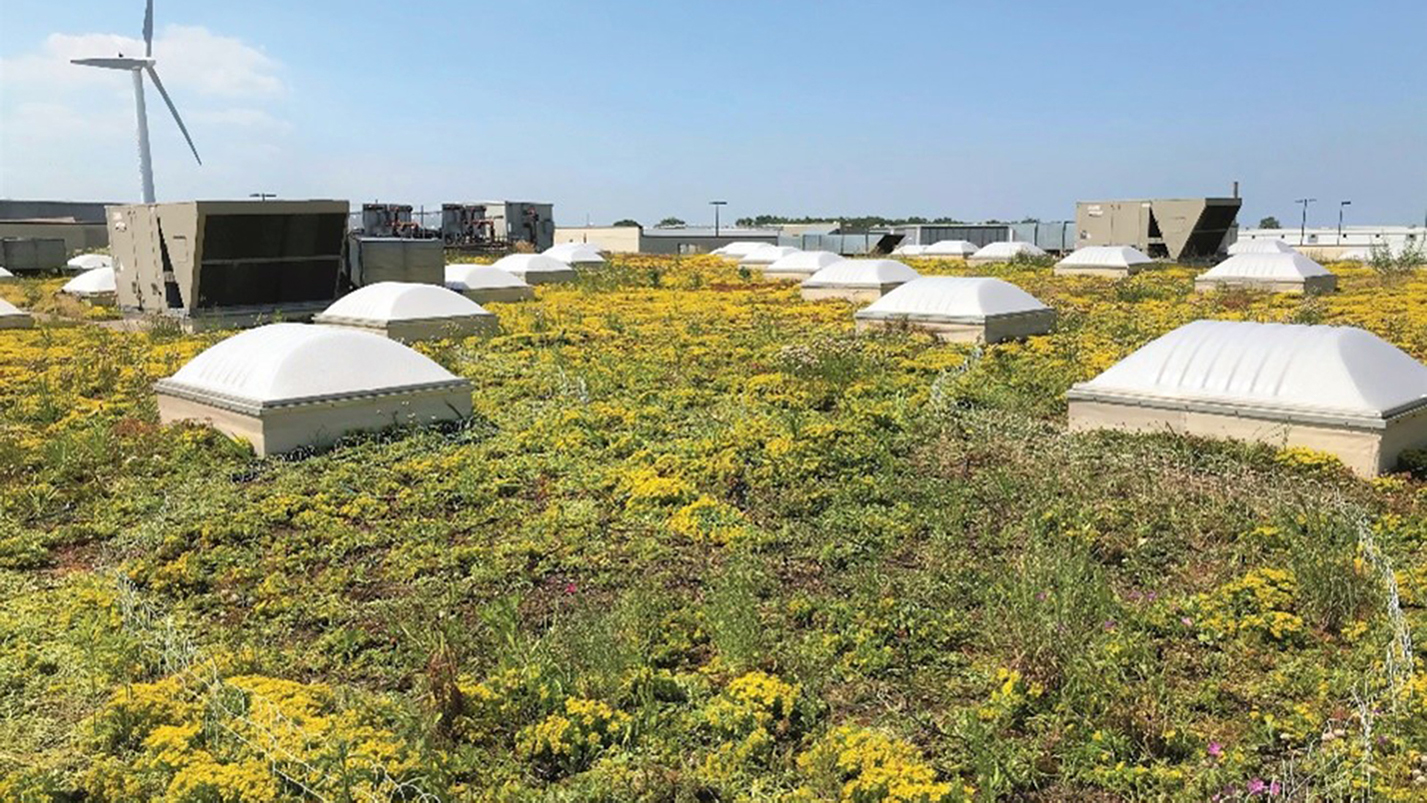City of Canton
The proper management of the quantity and quality of storm water runoff is crucial to protecting the Canton community. When left unmanaged, the increased quantity of storm water runoff resulting from development and urbanization can lead to flooding and property damage. The unmanaged quality of storm water runoff resulting from development, pollutants, and other illicit discharges degrades the chemical, physical, and biological integrity of Canton’s lakes, streams, and other water bodies. Therefore, to alleviate these problems, the City of Canton has taken steps to promote proper storm water management.
In 2009, “Chapter 961: Storm Water Management” was adopted as part of the codified ordinances of the City of Canton to satisfy regulatory requirements of the National Pollutant Discharge Elimination System Storm Water Program. In addition, the “City of Canton Storm Water Management Manual” was adopted to supplement the ordinance by providing further standards, applicability, design criteria, requirements, recommendations, and guidance for various aspects of storm water management in the City of Canton that are not provided explicitly in the ordinance.
The “City of Canton Storm Water Management Manual” should be used any time there are questions regarding City requirements for storm water management related to development or within City right-of-way. In general, whenever there is proposed development in the City of Canton that requires the submission of a site plan to the City Zoning Inspector, the City Engineering Department will need to review and approve the plan for proper storm water quantity management. If the proposed development will disturb one or more acres of land, the Stark SWCD will also need to review and approve the plan for proper storm water quality management. The “City of Canton Storm Water Management Manual” describes all aspects of both storm water quantity and storm water quality management requirements as well as general storm water drainage provisions.
State of Ohio Storm Water Program
CHAPTER 3745-39 OF THE ADMINISTRATIVE CODE
3745-39-02 Objectives of the Ohio EPA storm water management program for small MS4s.
(A) Storm water runoff continues to harm Ohio’s waters. Runoff from lands modified by human activities can harm surface water resources in several ways, including the changing of natural hydrologic patterns and elevating pollutant concentrations and loadings. Storm water runoff may contain or mobilize high levels of contaminants, such as sediment, suspended solids, nutrients, heavy metals, pathogens, toxins, oxygen-demanding substances and floatables.
(B) The purpose of the Ohio EPA storm water management program for small municipal separate storm sewer systems (MS4s) is to regulate sources to protect water quality and to establish a comprehensive storm water management program. In this program, small MS4s have flexibility to determine the best management practices and measurable goals that are most appropriate for their system, for each of the six minimum control measures described in paragraph (C) of rule 3745-39-03 of the Administrative Code.
(C) What constitutes a municipal separate storm sewer system is often misinterpreted and misunderstood. The term does not solely refer to municipally owned storm sewer systems, but rather is a term of art with a much broader application that can include, in addition to local jurisdictions, state and federal facilities, public universities, local sewer districts, public hospitals, federal installations, military bases and prisons. The municipal separate storm sewer system is not just a system of underground pipes – it can include roads with drainage systems, gutters and ditches.
Ohio EPA NPDES requirements for small MS4s.
(OAC Rule #: 3745-39-03)
[Comment: For dates of non-regulatory government publications, publications of recognized organizations and associations, federal rules and federal statutory provisions referenced in this rule, see rule 3745-39-01 of the Administrative Code.]
(2) Minimum control measures.
(e) Post-construction storm water management in new development and redevelopment.
- You must develop, implement and enforce a program to address storm water runoff from new development and redevelopment projects that disturb greater than or equal to one acre, including projects less than one acre that are part of a larger common plan of development or sale, that discharge into your small MS4. Your program must ensure that controls are in place that would prevent or minimize water quality impacts.
- You must:
- Develop and implement strategies that include a combination of structural, non-structural, or both types of best management practices as you determine appropriate for your community;
- Use an ordinance or other regulatory mechanism to address post-construction runoff from new development and redevelopment projects to the extent allowable under state or local law; and
- Ensure adequate long-term operation and maintenance of best management practices.
Canto, OH Municipal Code
Chapter 961 Stormwater Management Ordinance
961.01 PURPOSES.
The purpose of this chapter is to provide for the health, safety and general welfare of the citizens through the regulation of storm water discharges in the City of Canton. This chapter seeks to meet that purpose through the following objectives:
- To enable the City of Canton to comply with the National Pollutant Discharge Elimination System Storm Water Program requirements and other applicable federal and state regulations.
- To facilitate compliance by owners of construction sites, developments and permanent storm water management systems within the City of Canton with federal and state standards and permits.
- To protect the safety and welfare of citizens, property owners, and businesses by minimizing the negative impacts of increased storm water discharges from new land development and redevelopment.
- To control the rate, volume and quality of storm water runoff originating from development and redevelopment sites so that surface water, groundwater, and properties are protected and flooding and erosion potential are not increased.
- To inhibit the deterioration of water resources resulting from development.
- To control non-point source pollution and stream channel erosion.
- To maintain the integrity of stream channels and networks for their biological functions, drainage, and natural recharge of groundwater.
- To protect the condition of state (and U.S.) waters for all reasonable public uses and ecological functions.
- To provide long-term responsibility for and maintenance of storm water management systems.
- To facilitate the integration of storm water management and pollution control with other ordinances, programs, policies and the comprehensive plan of the City of Canton.
- To regulate the contribution of pollutants to the municipal separate storm sewer system (MS4) by storm water discharges from development and redevelopment activities.
- To prohibit illicit and unauthorized discharges and illegal connections to the MS4 and establish respective enforcement provisions.
- To establish legal authority to carry out all the inspection and monitoring procedures necessary to ensure compliance with this chapter.
(Ord. 200/2009. Passed 10-5-09.)
961.03 LEGAL AUTHORITY.
This chapter is adopted pursuant to authority conferred by and in accordance with U.S. EPA’s National Pollutant Discharge Elimination System Phase II Storm Water Program.
The Director of Public Service or designee, on behalf of the City of Canton, is authorized to administer and enforce the necessary standards and regulations set forth in or referenced by this chapter, and amend the same from time to time as deemed necessary.
(Ord. 200-2009. Passed 10-5-09.)
961.04 DESIGNATION OF STORM WATER AUTHORITY, POWERS AND DUTIES.
- In the event of an emergency or any imminent or actual danger caused by or otherwise affiliated with storm water runoff, and to preserve the health, safety and welfare to any person, property or structure affected or potentially affected by such emergency or danger, the Director of Public Service or the Director of Public Safety or their authorized designees, may enter, without prior consent by the owner, upon any property and authorize the necessary work to alleviate or otherwise remedy such danger. Costs associated with said work may be assessed to the responsible persons, parties and/or entities, in addition to any necessary enforcement or penalty in accordance with the provisions of this chapter or any other provisions of law.
- The City Engineer, subject to the direction of the Director of Public Service or designee, is hereby designated to have the primary jurisdiction and control of the management of the City of Canton’s MS4.
- The Director of Public Service or designee, on behalf of the City of Canton, is hereby authorized to designate the City Engineering Department or any other City Department as the Administrator of this chapter. The City Engineering Department may furnish additional information necessary for the proper implementation of the requirements of this chapter and may provide such information in the form of a “City of Canton Storm Water Management Manual”. (Ord. 200-2009. Passed 10-5-09.)
- Representatives of the City Engineering Department, City Health Department, City Fire Department or other authorized City department or government agency, shall have the right to enter upon any land for the purposes of making an inspection or acquiring information, in accordance with other provisions of this Chapter, to determine whether or not the property conforms to the requirements of this Chapter.
- The Director of Public Service or designee, on behalf of the City of Canton, is authorized to contract, in whole or in part, with the Canton City Health Department or other governmental agency, or to designate the City Engineering Department or other City department for the enforcement of this Chapter, in accordance with other provisions of this Chapter. (Ord. 225-2010. Passed 11-22-10.)
961.05 ADOPTION OF “CITY OF CANTON STORM WATER MANAGEMENT MANUAL”.
- Subject to the provisions set forth in this chapter, the City of Canton hereby adopts the “City of Canton Storm Water Management Manual” which provides policy, standards, applicability, criteria, requirements, recommendations and guidance for general storm water drainage, storm water quality management, and storm water quality management in the City of Canton that are not provided explicitly in this chapter. A copy of the “City of Canton Storm Water Management Manual” is hereby referenced and adopted as part of this chapter. (Ord. 200-2009. Passed 10-5-09.)
- The City Engineer is authorized to amend, supplement, or revise the “City of Canton Storm Water Management Manual”. The City of Canton Storm Water Management Manual, shall be made available in the Office of the City Engineer, and may be updated and expanded from time to time, at the discretion of the City Engineering Department, based on improvements in engineering, science, monitoring, local maintenance experience, and federal or state regulations. (Ord. 225-2010. Passed 11-22-10.)
961.06 APPLICABILITY.
Policy, standards, criteria, requirements, specifications and recommendations as set forth in this chapter shall apply to all times and to all uses, activities, sites, developments, redevelopments, landowners, and other persons that discharge or cause to be discharged storm water runoff within the City of Canton, or as otherwise stated in this chapter or in the current version of the “City of Canton Storm Water Management Manual”.
(Ord. 200-2009. Passed 10-5-09.)
961.10 DISCLAIMER OF LIABILITY.
- Compliance with the provisions of this chapter shall not relieve any person from responsibility for damage to any person otherwise imposed by law. The provisions of this chapter are promulgated to promote the health, safety and welfare of the public and are not designed for the benefit of any individual or for the benefit of any particular parcel of property.
- The provisions of this chapter shall not be construed as authorizing any person to maintain a nuisance on a property, and compliance with the provisions of this chapter shall not be a defense in any action to abate such a nuisance.
- Failure of the City of Canton to observe or recognize hazardous or unsightly conditions or to recommend corrective measures shall not relieve the site owner from the responsibility for the condition or damage resulting therefrom, and shall not result in the City of Canton, its officers , employees or agents as being responsible for any condition or damage resulting therefrom.
- By approving a plan under this chapter, the City of Canton does not accept responsibility for the design, installation and operation and maintenance of private storm water management systems. (Ord. 200-2009. Passed 10-5-09.)
961.12 ADMINISTRATIVE INSPECTION WARRANT.
The Director of Public Service or designee may apply to any court of record within his jurisdiction for an administrative inspection warrant pursuant to Ohio R.C. 2933.21 (F), under any of the following circumstances:
- If any inspection required pursuant to law is refused, hindered or thwarted by the owner or the agent of the owner; or
- If in the opinion of the Director of Public Service or designee an inspection is necessary to determine the existence of articulable physical conditions which are or may become hazardous to the public health, safety or welfare of any person or persons; or
- The Director of Public Service or designee has reason to believe that hazardous or dangerous conditions exist, that there are conditions existing which constitute a violation of this Chapter, or reason to believe that there is non-compliance or lack of maintenance of previously imposed storm water management requirements. (Ord. 225-2010. Passed 11-22-10.)
961.13 ENFORCEMENT.
- Notice of Violation of Regulations.
- Upon commencing or completion of an activity subject to these regulations, if upon inspection, the Director of Public Service or designee determines that conditions exist in violation of the existing regulations, the matter may be referred to the designated City Department or entity for further enforcement action pursuant to the applicable part of this Chapter.
- Upon determination that a person has violated a prohibition or failed to meet a requirement of this Chapter, the designee may order compliance by written Notice of Violation. Such notice must specify the violation and shall be hand delivered and/or sent by registered mail to the owner/operator of the facility, and shall contain:
- The name and address of the owner or the applicant or the responsible person.
- The address or other description of the site upon which the violation is occurring.
- A statement specifying the nature of the violation.
- A description of the remedial measures necessary to bring the action or inaction into compliance with this Chapter and the date for the completion of such remedial action. Remedial measures may include, but are not limited to, the following, as applicable:
- The performance of monitoring, analyses, and reporting;
- The elimination of illicit discharges or illegal connections;
- That violating discharges, practices, or operations cease and desist;
- The abatement or remediation of storm water pollution or contamination hazards and the restoration of any affected property;
- The implementation of source control or treatment BMP’s; or
- The necessary maintenance or reconstruction to be in substantial compliance with the approved plans (if applicable) or otherwise to the satisfaction of the Director of Public Service or designee.
961.19 NOTIFICATION OF RELEASE OR SUSPECTED RELEASE OF ILLICIT DISCHARGES INTO MS4.
- Notwithstanding other requirements of law, as soon as any homeowner, landowner or person responsible for a residence, land, business, facility or operation, or responsible for emergency response of such has information of any known or suspected release of materials which are resulting or may result in illicit discharges into the MS4 from said residence, land, business, facility or operation, said person shall take all necessary steps to ensure the discovery, containment, and cleanup of such release.
- If the illicit discharge emanates from a commercial or industrial establishment, the owner or operator of such establishment shall also retain an on-site written record of the discharge and the actions taken to prevent its recurrence. Such records shall be retained for at least three years. (Ord. 200-2009. Passed 10-5-09.)
Excerpt from City of Canton, Ohio Stormwater Management Manual
PART 3. STORM WATER QUALITY MANAGEMENT
Storm Water Quality Management is the implementation of storm water management systems on a site for proper management of the quality of construction site and post-construction storm water runoff. Storm water quality management attempts to reduce or eliminate erosion and sedimentation caused by storm water runoff as well as the transportation of pollutants in storm water runoff to water resources.
Part 3 is not intended to provide an exhaustive list and descriptions of all requirements necessary to prepare plans, specifications, reports, calculations, and other information needed for applicable storm water quantity management. The designer shall follow generally accepted standards for engineers, architects, and surveyors, as applicable.
A. Applicability of Storm Water Quantity Management
All applicable standards and requirements of Part 2 apply. Except for exempted activities and as otherwise stated herein,
standards and requirements of Part 3 apply to:
- All proposed developments, uses, or activities that require the submission of a site plan per the City of Canton Planning and Zoning Code;
- Any proposed developments, uses, or activities that may not require the submission of a site plan per the City of Canton Planning and Zoning Code but will otherwise result in a change to runoff patterns or increase runoff from existing conditions;
- Public roadway, infrastructure, flood control, or other capital improvement projects.
Examples of regulated activities include, but are not limited to:
- Commercial, industrial, or institutional construction/development projects
- Subdivision (residential and industrial) construction/development projects
- Recreational projects
- Public projects (roadway, infrastructure, capital improvements, parks and trails, etc.)
- Redevelopment projects
- Parking lot construction or reconstruction
B. Exemptions from Storm Water Quantity Management
Activities exempted from Part 2 are exempted from Part 3 of these regulations.
C. TMDL Requirements for Storm Water Quantity Management
See Total Maximum Daily Load Requirements in Part 2 of these regulations. Unless otherwise required by City Engineering, appropriate recommended BMPs to address TMDLs should be implemented for regulated activities.
D. Runoff Analysis
A Runoff Analysis is required for regulated activities that will create > 6,000 square feet of new impervious surface. A Runoff Analysis consists of three (3) components which must be submitted to City Engineering:
1. Peak Discharge Analysis: Must be performed showing existing and proposed peak runoff rates for the 2-, 5-, 10-, 25-, 50-, and 100-year storm events. Acceptable methods to calculate peak flows are:
- Rational Method – suitable (and recommended) for small drainage areas (typically less than 30 acres);
- Soil Conservation Service (SCS) Method;
- USGS regression equations as described and referenced in the current edition of ODOT’s L&D Manual – Volume II – Drainage Design;
- Other methods may be used pre-approved by City Engineering.
All values, assumptions, and other data used must be clearly shown and, where appropriate, supported by calculations.
2. Drainage Maps: Scaled pre- and post-developed drainage maps must be provided and shall contain the following, at a minimum:
a. Existing/proposed elevation contours with the contour interval not exceeding two feet. Proposed grading within regulated sites shall provide positive drainage for all areas, unless otherwise approved by the City Engineer. Contour lines and elevations shall be provided to clearly indicate existing and proposed drainage patterns. Major flood paths and ponding for the 100-year runoff (including surcharging of storm sewers) shall be considered. Grading and/or infrastructure shall be able to convey the 100-year post-developed runoff safely from all locations to an adequate outlet.
b. Natural and man-made drainage features and water resources;
c. Point(s) of analysis: A point of analysis is an identified particular point on the earth’s surface where pre- and post-developed storm water runoff is evaluated. The point of analysis should be the point where post-developed runoff will discharge from the site. Depending on topography, there may be several directions that runoff discharges from the site and therefore several points of analysis.
d. Delineated drainage areas (including off-site areas that drain onto the project site, as applicable) contributing to each point of analysis, including the size of each respective area (in acres). Enough contouring should be shown beyond the drainage divides to confirm the watershed boundaries;
e. Flow paths of the hydraulically most distant points within each individual drainage area to the respective point of analysis. The segments of this path that are overland/sheet flow, shallow concentrated flow, open channel flow, and pipe flow shall be clearly indicated by using different colors, line types, or labeled accordingly. The upper and lower elevations along each respective flow segment and the length of each segment must be provided. Calculations showing how the time of concentration was determined for each area must be provided;
f. The various types of surface areas within each of the individual drainage areas and their associated runoff coefficients or curve numbers, etc. This shall be done by using different colors of shading or another preapproved method. Calculations showing how weighted runoff coefficients or curve numbers were determined for each drainage area must be provided;
g. Downstream drainage system(s) that will be used to convey flows from all proposed storm conveyance systems. Calculations or assumptions of the capacity of this outlet should be provided to be used as a check for its adequacy to convey the proposed flows from the development;
3. Downstream Capacity Evaluation: The regulated party shall identify and evaluate the downstream drainage system within the immediate vicinity of the regulated activity that will accept runoff from the site. This information is needed to help determine if storm water detention is needed and the respective detention criteria:
a. At a minimum, the downstream system shall be shown or referenced on a post-developed drainage map and should be shown on a site plan/construction plan.
b. A brief narrative description of the downstream system shall be provided. If storm water detention is required, this description shall be provided in a Storm Water Management Report.
PART 4. STORM WATER QUALITY MANAGEMENT
Storm water quality management is the design and implementation of BMPs to manage the quality of and reduce pollutants in storm water runoff from a site.
A. General Storm Water Quality Management Requirements
Storm water quality management requirements in the City of Canton can be satisfied by meeting all applicable requirements of each of the following:
• The current Ohio EPA NPDES Construction Storm Water Permit;
• The current Stark County Storm Water Quality Regulations (contact Stark SWCD);
• Part 4 of this manual.
Any perceived conflicts shall be settled at the discretion of the City of Canton and/or the Stark County Soil & Water Conservation District (SWCD).
G. Post-Construction Storm Water Management
Post-construction storm water management is the management of the quantity and quality of post-construction storm water runoff.
• Post-construction storm water quality management is the management and treatment of the quality (i.e. pollutant reduction) of post-construction storm water runoff and shall be addressed by satisfying applicable requirements of:
o The current Ohio EPA NPDES Construction Storm Water Permit;
o The current Stark County Storm Water Regulations (contact Stark SWCD);
o Part 4 of this manual.
All aspects of post-construction storm water quality management are reviewed by Stark SWCD.
• Post-construction storm water quantity management is the management of the quantity (i.e. flow and volume) of post-construction storm water runoff for conveyance and flood control and shall be addressed by satisfying applicable requirements of Part 3 of this manual. All aspects of post-construction storm water quantity management are reviewed by the City of Canton Engineering Department.
So that receiving streams’ physical, chemical and biological characteristics are protected and stream functions are maintained, post-construction storm water practices shall be designed, installed, and maintained for regulated activities to provide perpetual management of post-construction runoff quality and quantity on regulated sites.
Post-Construction Storm Water Management General Standards: Unless otherwise approved, all post-construction storm water management controls or BMPs designed and implemented for regulated sites shall comply with the following standards, as applicable:
- Ohio’s Rainwater and Land Development Manual;
- Ohio Department of Transportation’s “Location and Design Manual – Volume Two – Drainage Design” may be utilized for roadway projects;
- Part 3 of this manual (for storm water quantity management).
I. Long-Term Maintenance Plan Required
A Long-Term Maintenance Plan (LTMP) shall be provided for all post-construction storm water BMPs implemented pursuant to these regulations. LTMPs shall comply with the following requirements:
- LTMPs shall be provided by the regulated party to the Stark SWCD as part of the SWP3 review.
- LTMPs shall be provided to the party responsible for post-construction operation of the site (including homeowner associations) upon completion of construction activities or as otherwise directed by Stark SWCD.
- Separate LTMPs shall be submitted for BMPs located on separate properties.
- LTMP contents: To ensure that storm water management systems function as they were designed and constructed, the LTMP shall be a stand-alone document, which contains, at a minimum:
- Cover sheet showing site name, date, and description of site’s immediate receiving drainage system (e.g. Water of the State, private system, City of Canton MS4, Stark County MS4, Township MS4, etc.).
- Responsible party: A designated person, party, or entity responsible for inspection and maintenance of the BMP(s), including contact information (i.e. address, telephone number, email, etc.).
- Assurance of operation and maintenance: A description of how BMP(s) will be operated and maintained in the absence or dissolution of the designated responsible party, including how such responsibilities will be transferred upon the sale of the subject property.
- BMP information: Descriptions of all post-construction storm water BMPs and all supporting design and installation data.
- Maintenance responsibilities: The routine and non-routine maintenance tasks to be undertaken.
- A schedule for inspection and maintenance.
- Easements and agreements: Any necessary legally binding maintenance easements and agreements.
- Map: A map showing all BMP locations and any access and maintenance easements.
- Statement prohibiting BMP alterations: A statement prohibiting the alteration of BMPs unless otherwise approved by the City of Canton and/or Stark SWCD.
- Pollutant disposal statement: A statement that any pollutants collected within post-construction BMPs shall be disposed of in accordance with local, state, and federal regulations.
- Statement of City of Canton authority: A statement acknowledging the City of Canton’s inspection and enforcement rights for violations of Chapter 961 Storm Water Management of the City of Canton codified ordinances.
- Statement of acceptance of responsibility: A statement acknowledging that the contents are requirements of the LTMP are understood an accepted by the responsible party.
- A printed name, signature, and date of signature of the responsible party.
- Any other information as required by Stark SWCD.
N. Inspection for Compliance with Storm Water Quality Management Requirements
1. General Authority: The regulated party shall allow an authorized representative of Ohio EPA, the City of Canton, and/or Stark SWCD, upon the presentation of credentials and other documents as may be required by law, to:
- Enter upon the regulated party’s premises where a regulated facility or activity is located or conducted or where records must be kept under the conditions of these regulations;
- Have access to and copy at reasonable times, any records that must be kept under the conditions of these regulations;
- Inspect at reasonable times any facilities or equipment (including monitoring and control equipment); and
- Sample or monitor at reasonable times, for the purposes of assuring compliance or as otherwise authorized by the Clean Water Act, any substances or parameters at any location.
2. Inspections During Construction Activities:
- Inspections by regulated party: Inspections shall comply with requirements of the Construction Storm Water Permit or as otherwise directed by Stark SWCD.
- Inspections by Stark SWCD: Inspections shall be conducted per the Stark County Storm Water Quality Regulations.
3. Long-Term Inspections of Post-Construction BMPs:
- Inspections by Responsible Party: Responsible parties, as described in a Long-Term Maintenance Plan for post-construction BMPs, shall inspect post-construction BMPs in accordance with terms described in the Long-Term Maintenance Plan.
- Annual Inspections by Stark SWCD: Stark SWCD performs annual inspections of post-construction BMPs with the exception of alternative BMPs. Alternative BMPs shall be inspected by the responsible party and certified of their proper operation and maintenance accordingly. Stark SWCD will issue an inspection report to the responsible party for each post-construction BMP inspected, detailing any maintenance needs and an associated timeline for completion. A copy of the inspection report will be sent to the City of Canton. Inspections by the Stark SWCD do not relieve the responsible party from their obligation to inspect and maintain respective post-construction storm water BMPs.
Links

 Kenosha, Wis. Highway KR Regenerative Stormwater ConveyanceThe Root-Pike Watershed Initiative Network Kenosha County, and others worked with AQUALIS to design and implement an innovative solution for stormwater control along Highway KR.
Kenosha, Wis. Highway KR Regenerative Stormwater ConveyanceThe Root-Pike Watershed Initiative Network Kenosha County, and others worked with AQUALIS to design and implement an innovative solution for stormwater control along Highway KR. Durham, N.C. Sinkhole Leads to Stormwater System RehabilitationThe tenant on this property noticed a depression that opened to the ground below and notified the property owners.
Durham, N.C. Sinkhole Leads to Stormwater System RehabilitationThe tenant on this property noticed a depression that opened to the ground below and notified the property owners.

